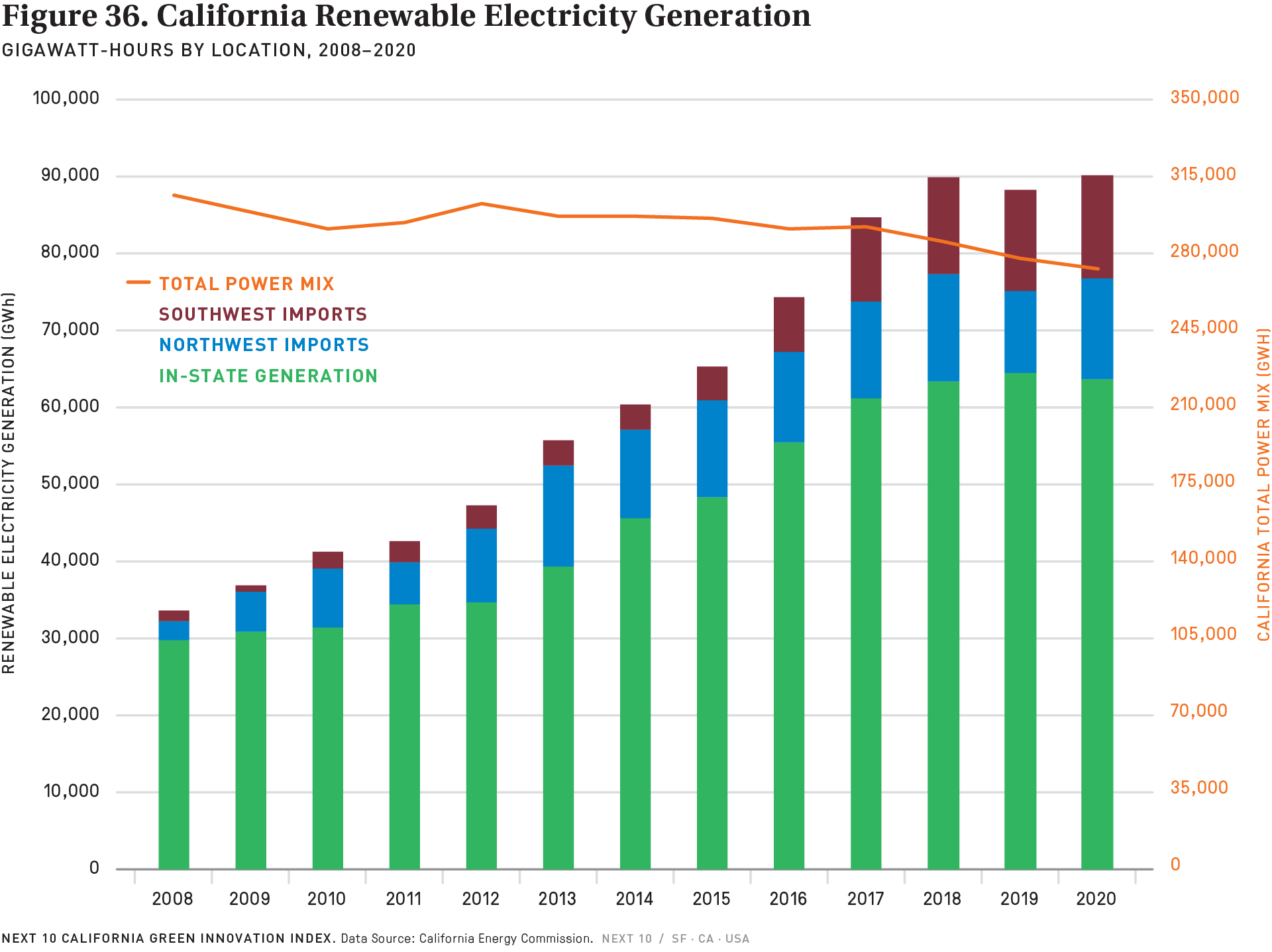Highlight
- Historically, northwest imports had a higher share of generation from RPS-eligible renewables than California’s in-state generation, which in turn had a higher share than Southwest imports. 2020 marked the first year when the percentages were almost the same—32.0 percent from Northwest imports, 33.0 percent from Southwest imports, and 33.3 percent from In-state Generation. Although renewable electricity generation plateaued in 2018, total generation had been decreasing, which means the percentage of generation from renewable sources still increased modestly.
Challenge
- Imports from the Southwest are more carbon intensive—higher GHG emissions per megawatt-hour imported—due to a higher percentage of generation from coal (17% in 2020) compared to Northwest imports (0.5%) and In-state Generation (0.2%). However, coal’s share of Southwest imports has declined from 30 percent in 2010. Still, if California is to achieve its clean energy goals, it must account for and make significant efforts to eliminate electricity imports generated from fossil fuel sources. Moreover, a large portion of California’s imports come from “unspecified sources,” which are not traceable to specific generating facilities.83 Given the almost complete absence of fossil fuel sources in Northwest imports (coal, oil, and natural gas made up less than one percent of Northwest imports), it is plausible that most of the GHG emissions from Northwest imports are from unspecified sources.
83 Baker, D. R., Sullivan, B. K., and Saul, J. California’s dry season is turning into a permanent state of being. August 13, 2021. Retrieved from: https://phys.org/news/2021-08-california-season-permanent-state.html
More About
Renewable Energy
Related Content
